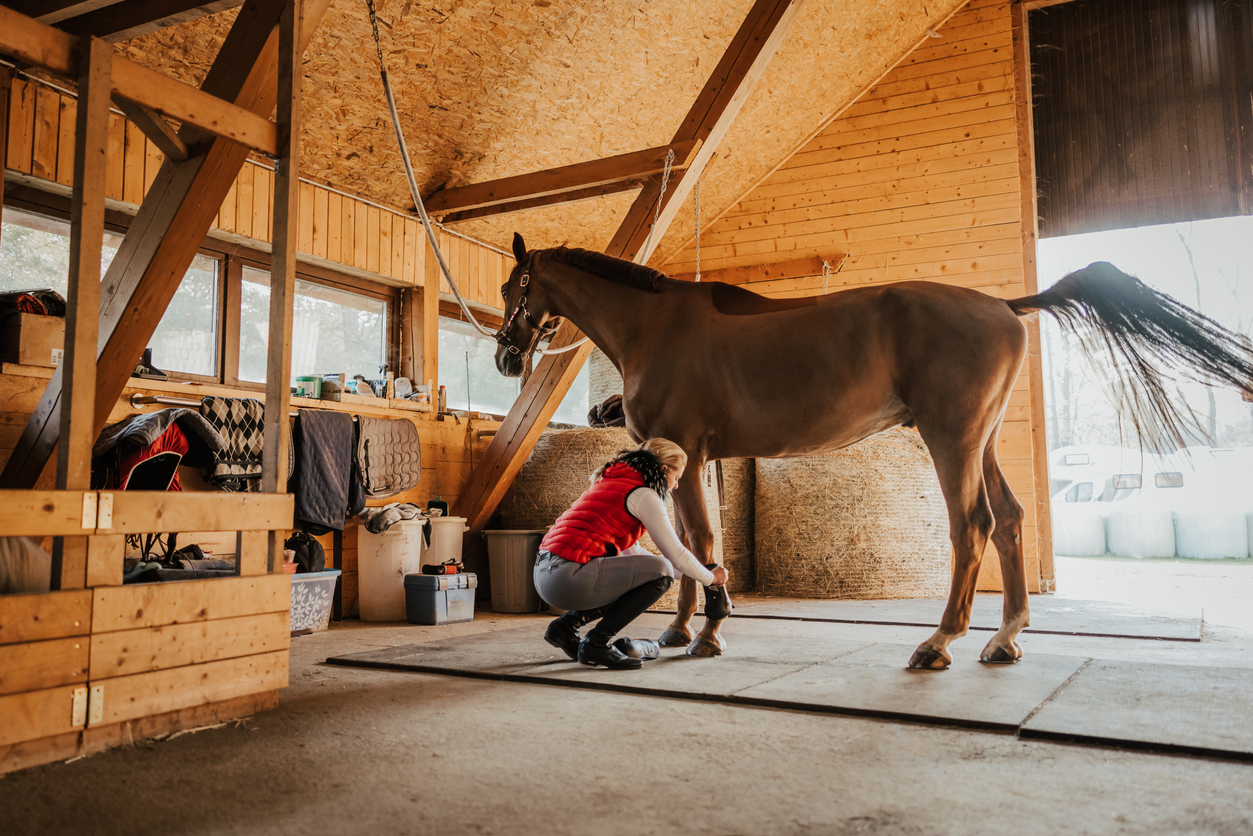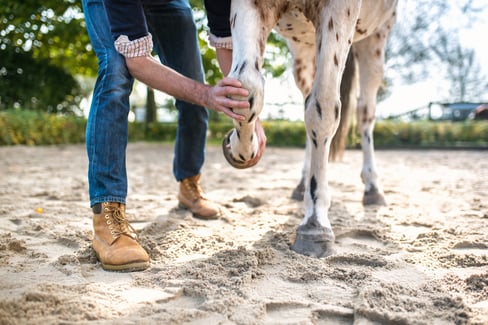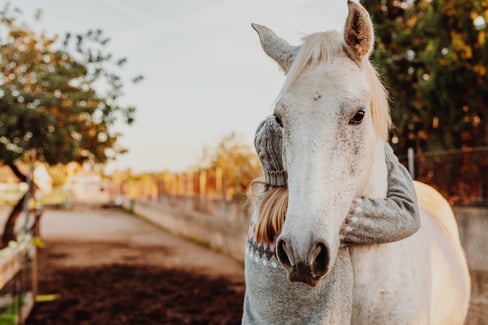Table of Contents
There’s nothing worse than seeing your steed limping, hopping, or whinnying in pain. One type of injury that can cause discomfort to your equine is a splint injury. These injuries affect the splint bones, are super painful, and can lead to nasty inflammation.
Worse yet, when splint injuries aren’t treated in time, they can lead to a lame horse. That’s why it’s essential to understand what and how to diagnose splint injuries to care for your horse correctly.
If you suspect you might have a splint bone horse on your hands, this guide is for you. We’ll go over the basics of a splint bone in horses and its symptoms, causes, and possible home remedies in case of emergencies.
What Is a Splint on a Horse?
Splint injuries in horses are when their splint bones are inflamed. This injury is especially common in growing equines who are training for competitions or racing. They are bony enlargements you can feel on the side of their legs.
Splints are commonly found between the fetlock joint and the knee, exactly where the splint bone is running down on the cannon bone’s either side. But if all that sounds a bit foreign, don’t worry. Let’s briefly discuss a horse’s leg anatomy to make it easier to understand.
On the sides of your horse’s cannon bones are lateral and medial splint bones. These bones were believed to be the remains of the animal’s prehistory ancestors, specifically their second and fourth toes.
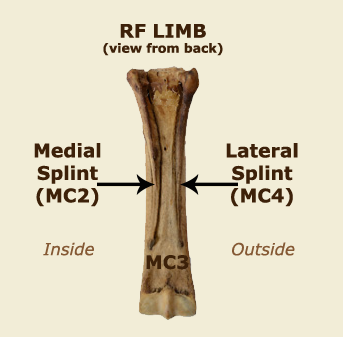
Between the split bones and the cannon bone is the interosseous ligament. When your horse turns three, the ligament and the two splint bones start to ossify or become one. This is why splint injuries are more common in growing horses from two to five.
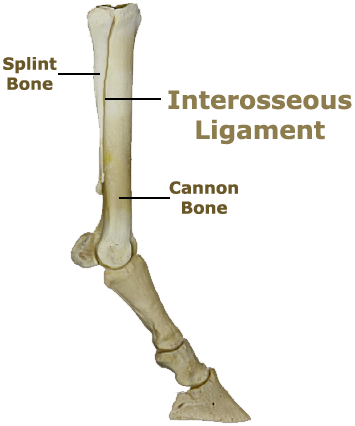
It’s also common for young horses to experience swelling and inflammation of the ligament during the ossification process. This can lead to pain and irritation intensified by a couple of common activities for your steed, including:
- Running
- Jumping
- Engaging in work
After the ossification process, splint injuries become less common. However, that’s not to say that they can’t still happen!
If your horse does get a splint injury, they typically happen on the horse’s forelimbs on the medial side because of the flat surface of the medial splint bone. When horses transfer their weight on the bones inside, the medial splint bone will bear more weight than the lateral splint bone’s slanted surface. Ouch!
Functions of a Horse Splint Bone
Okay, so we know what a splint bone is, but why do horses have one?
Interestingly enough, it’s not to support a horse’s weight! If a horse puts too much weight on a splint bone, the bone can become injured. Instead, splint bones are placeholders that help keep your animal’s tarsal and carpal bones in place.
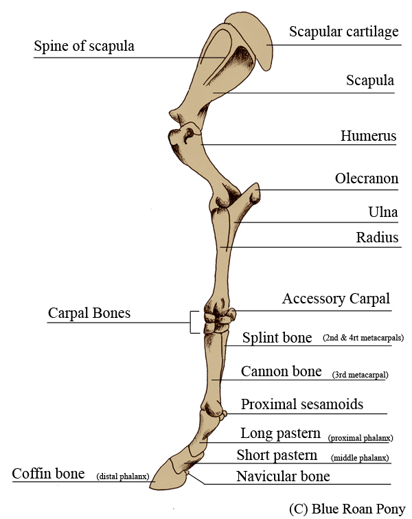
Thanks to the splint bone, your horse has a wide range of movement in its joints. In other words, the splint bone is one part of the horse that is critical in the mechanics of joint movements.
The secondary function of splint bones is to provide an anchoring fascia and tendon attachment to the forelimbs. Straining a splint bone injury can lead to severe pain because it also damages the attachment of bone to bone and muscle to bone.
Because the splint bone is so important for horse mobility, it pays to support your horse’s joints with additional supplements. Horse supplements like TRI-ACTA can help you avoid painful splint bone horse injuries and keep your steed moving. Because TRI-ACTA contains ingredients that naturally occur in your horse’s body, including glucosamine and chondroitin, and there are no fillers, you can easily incorporate the supplement into your horse’s diet without worrying about allergies.
TRI-ACTA H.A. for Equine
Our maximum strength formula is perfect for horses that are ageing, experiencing arthritis and stiffness, are in training and competition, or under a heavy workload.
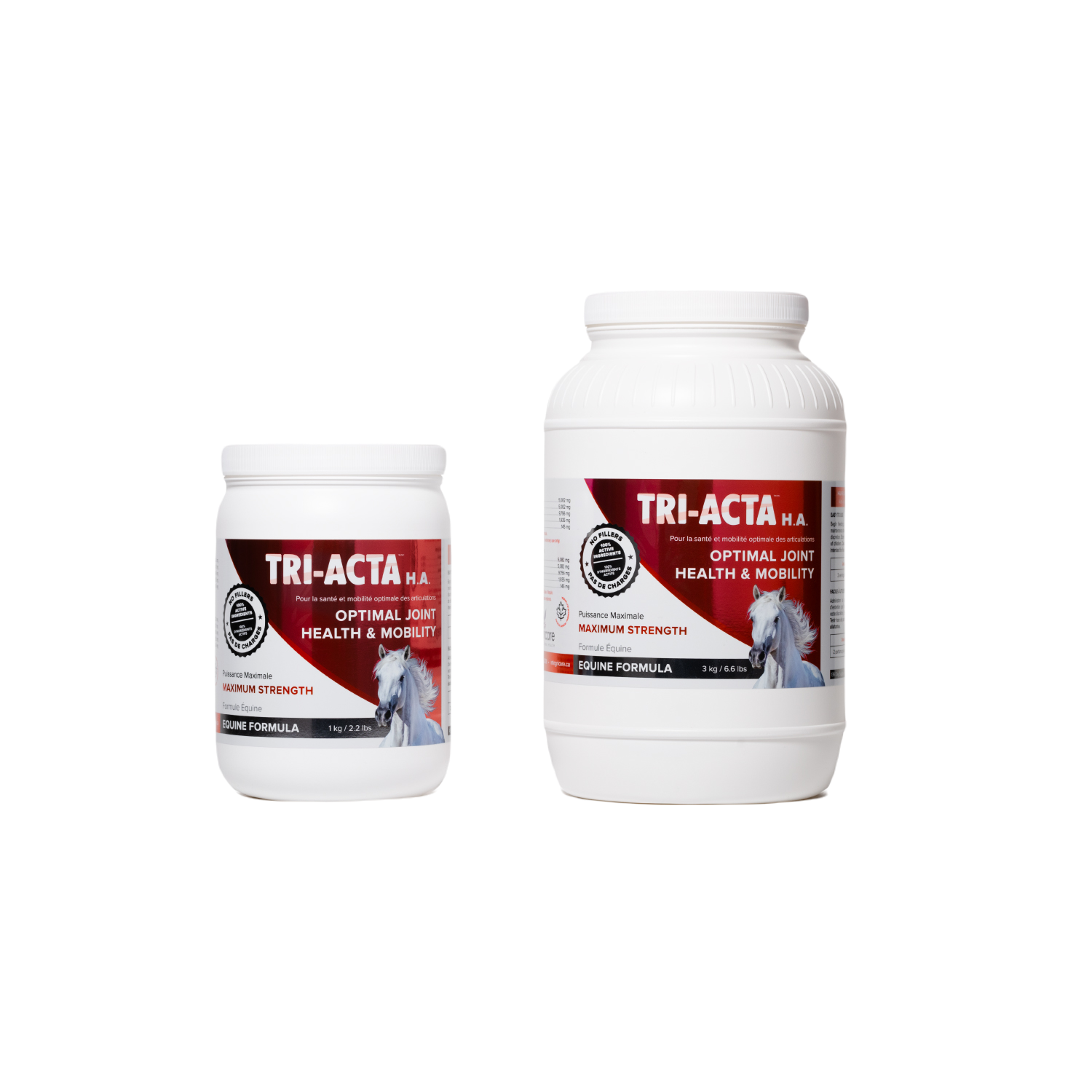
What Causes a Horse Splint?
Splint injuries in horses are normally referred to as popping as a splint. They occur during the damage of the interosseous ligament, resulting in pain, inflammation, and increased heat around the area.
There are several reasons why these types of horse injuries can happen, but the most common ones include the following:
- Being overweight
- Repeated work and activities
- Direct trauma to the ligament
- Unbalanced hooves
- Diets composed of a mineral imbalance
You might also have heard of false splints. These common injuries result from external trauma exerted directly on the splint bones. False splints happen because of a fall or a kick, resulting in the splint’s inflammation. In severe cases, the damage can often lead to fractures.
Diagnosing Splints
Physical examinations are the simplest yet most effective means to diagnose horse splints. Your vet uses the information from the exam to identify current symptoms and lifestyle changes due to the splint injury.
When the veterinarian observes inflammation and pain when he touches the area, radiographs will be recommended for a more definitive diagnosis. These images can also provide a more distinct idea of the horse’s bone growth and look for signs of a fracture.
In rare cases, your vet will also suggest performing an ultrasound, especially when he suspects impact or damage to the horse’s suspensory ligament.
There are also instances when the horse does not feel pain on palpation or experience lameness. This does not mean there is no splint injury to be concerned about. It’s possible that the injury is not active anymore and has already started healing. When this happens, the splint won’t cause further problems, so there’s no need to provide any treatment.
Symptoms of Horse Leg Splint
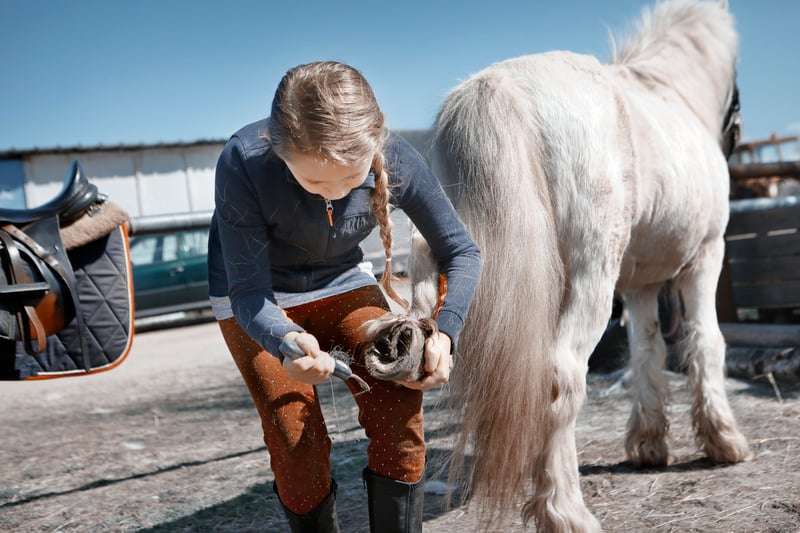
One of the most obvious signs of a splint bone horse injury is lameness or limping. You’ll notice this, especially when your horse is walking or trotting. Lameness occurs intermittently for 12 months and becomes more pronounced when the horse exercises on hard ground.
Aside from lameness, it’s also possible to see the horse flinching, especially when you touch the affected ligament. Swelling is also a common symptom; it can be one large lesion or multiple small ones. Increased heat in the area is also a possible symptom.
When the ligament ossifies into bone, you’ll observe the soreness and swelling slowly disappear.
To help you identify different symptoms and know how to treat your steed, it pays to remember that there are a couple of different types of splint bone horse injuries. The below table breaks down the different types of splint bone injuries.
|
Types of Splint |
Description |
|
True Splint |
A tear in the ligament together with a bony and fibrous growth between the ligament and the bone |
|
Blind Splint |
Bony and fibrous growth between the suspensory ligament and the splint bones, no external swelling |
|
Periostitis |
Trauma to the horse’s soft tissues covering the bone, leading to inflammation |
|
Knee Splint |
Swelling in the lower joint and near the knees, can lead to osteoarthritis |
Horse Splint Remedies to Prevent Splints
We know horse splints are common in growing equines, especially when they train and exercise often. Despite that, the good news is that splint injuries can be prevented like any disease or medical condition.
One way to prevent splints is gradually increasing the horse’s performance and training difficulty. This allows the horse to slowly get used to the routine without overworking his joints and muscles. Moreover, it’s even more important to take it slow with young horses, especially those returning to work after laying off for a while.
Splint boots are also helpful in preventing accidental splint injuries. These accidents can happen when a horse unintentionally hits a hoof with the insides of his opposite leg. Splint boots can prevent this from occurring, keeping your horse steady on his feet.
Feeding fortified grains to your horse can also help protect splint bones because they aid in proper bone development. These types of grains have balanced phosphorus-to-calcium ratios. Remember to consult your veterinarian before feeding fortified grains to your horse to ensure the animal’s safety.
Finally, having a balanced diet is also proven to prevent horse splint injuries. When your horse is eating right, it lessens the risk of becoming overweight. This ensures the animal’s splint bones are not strained too much, especially during exercises and competitions. You can supplement your horse’s diet with TRI-ACTA to help your horse maintain good joint health throughout their lifetime.
TRI-ACTA for Equine
Providing preventative support for younger horses and helping mitigate the early onset of joint degeneration and other mobility issues.
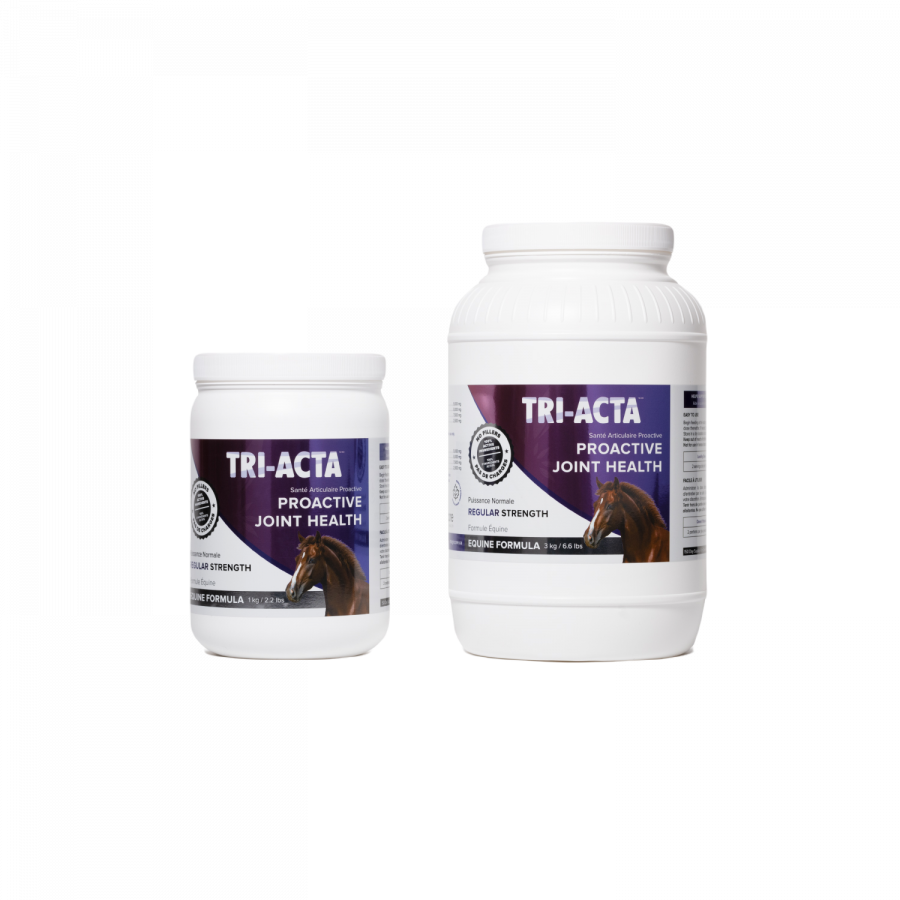
Horse Splint Recovery Time
Horse splint injuries don’t heal overnight. They don’t have quick-fix solutions, but religiously sticking to your vet’s recommendations can speed up your horse’s healing process. Moreover, early detection and prevention are always key to a better prognosis for the animal.
Different splint injuries will have various recovery times, depending on the injury’s severity and detection time. The recovery time can range from weeks to months, especially when a larger area on the splint bones is involved.
A splint injury’s recovery time also depends on the care and attention you provide your horse. The more gradually you let the animal return to his standard training and work routine, the faster the splint bones and ligaments will likely heal. This is why letting the horse return to work early is strongly discouraged, especially when he still suffers from bony enlargements.
With proper rest and care, splint injuries can reduce in size. But the time frame for full recovery varies depending on the horse’s age and the severity of the damage.
Horse Leg Splint Treatments
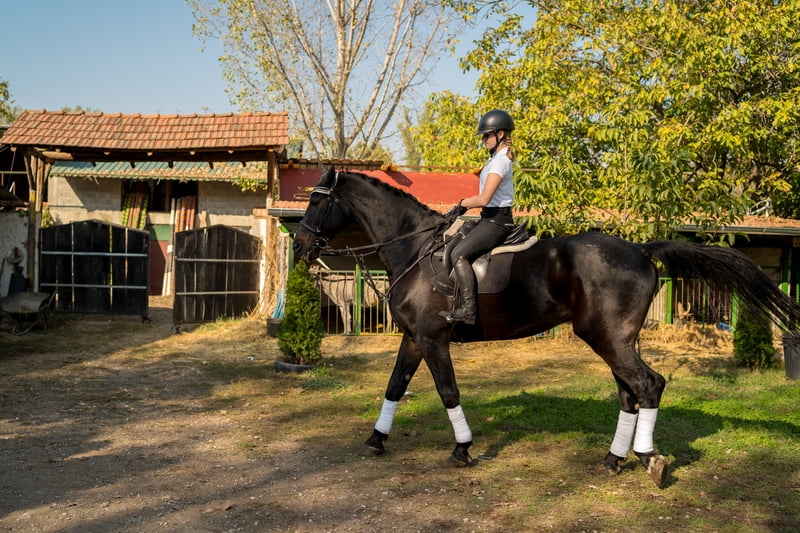
Treating active bone splints typically consists of four main steps:
- Cold therapy
- Wrapping
- Taking anti-inflammatories
- Ample rest
- TRI-ACTA H.A. joint supplements
Completing this five-step plan is a positive leap towards allowing your horse to recover and return to the ground fully soon.
Cold Therapy
Cold therapy involves applying a cold compress with ice on the involved area for an hour three to four times daily. If the injury is more severe, you can directly apply the cold compress more frequently.
You can continue cold therapy until you observe the inflammation disappear. A possible way to tell this is to monitor the bony swelling for reduced pain and heat. The injury should also be shrinking gradually and not getting bigger.
Wrapping
Aside from cold therapy, keeping the injured area stationary is imperative to allow it to rest. This is why it’s best to wrap the involved limb using a pressure wrap for the first two weeks. Then, you can switch to support wraps in the succeeding weeks for twelve hours daily. The support wraps should help minimize the complications of prolonged wrapping.
In severe splint injuries, long-term constant wrapping is preferred. However, you must consult your veterinarian regarding the best time frame for your horse’s faster recovery.
One thing to remember about wrapping is that it may cause skin irritation, especially long-term. You must monitor any symptoms of redness and itchiness.
Anti-Inflammatories
Some veterinarians prescribe horse anti-inflammatories to help relieve pain and promote comfort in the horse. However, the dosage and brand will depend on the severity of the injury. Most horse owners recommend topical anti-inflammatories because they present fewer side effects than oral NSAIDs.
Besides topical anti-inflammatories joint supplements can also help aid in reducing inflammation. One major anti-inflammatory agent is MSM, which is can be found in supplements such as TRI-ACTA.
Additionally, pain from splint injuries with lameness is best medicated with oral NSAIDs. That’s considering the medicine’s benefits outweigh the risks or the side effects the horse will feel.
Rest
The last part of the treatment plan is the most crucial step to full recovery. Regardless of the severity, the horse needs to rest. He must keep the injured area well-protected for weeks to months to prevent complications and speed up healing.
Mild splint injuries can take only three to six weeks before complete healing. On the other hand, severe cases can take three to six months. You must always consider the rest and proper attention given to the animal.
The horse must only return to work gradually when pain on palpation and lameness is gone. Plus, you must hand walk the horse while he rests, especially during the first two weeks to a month of recovery. Don’t forget to consider the animal’s emotional and mental health.
Alternative Treatments
A new and innovative treatment introduced is SCENAR therapy, which is proven effective in acute splint injuries. It works similarly to acupuncture, but this therapy utilizes the biofeedback system in treating the involved body part using an electrical impulse.
Natural topical creams are also becoming famous for aiding the treatment of acute injuries. They can also reduce bruising tendencies and inflammation. Some horse owners also recommend using Chinese herbal medicines, which they believe can speed up healing.
Surgery Indications
Surgery is the treatment of choice for fractured splint bones. This removes the affected part of the bone and ligament to prevent the worsening of lameness, pain, and inflammation. We know that surgery always comes with risks. As long as your horse’s surgeon and vet work hand-in-hand, there should not be complications.
Possible Complications
Sometimes, even when you have exhausted all the means to treat your horse’s split injury, complications still happen. These are inevitable, so you must always be one step ahead.
The main reasons for complications arise from cosmetic issues, but it’s also possible for the horse to develop the following:
- Carpal arthritis
- Soft tissue interference
- Long-term lameness
These complications can wear off in weeks, but they can also be long-term, especially in senior competition horses.
Summary
Splint bone horse injuries are nasty injuries that affect your horse’s mobility and cause pain and inflammation. The key to treating these injuries is early detection and prevention to ensure they don’t result in bigger problems later down the line.
Some of the easiest preventions of splint injuries involve ensuring your horse is adequately warmed up before competitions and exercises. An optimal diet plan can also help maintain the animal’s weight, preventing joint and muscle strain. You can also incorporate joint supplements into your horse’s diet to help as a preventative measure.
TRI-ACTA and TRI ACTA H.A. are two effective joint supplements that can support and maintain the strength of your horse’s joints. Thanks to natural ingredients like glucosamine and MSM, these supplements can help you avoid splint bone horse injuries and keep your steed on its feet.
TRI-ACTA H.A. for Equine
Our maximum strength formula is perfect for horses that are ageing, experiencing arthritis and stiffness, are in training and competition, or under a heavy workload.

Contact Integricare today to learn more about these supplements and how they can help!
Newsletter Signup
Subscribe to our newsletter to receive the latest news and exclusive offers.
.jpg?height=2000&name=Cliick_Integricare-DISPLAY-REVISEDV2%20(1).jpg)
Proactive & Therapeutic Joint Supplements
When given daily, Integricare joint supplements recover bone and joint injuries faster and help prevent mobility injuries from happening in the first place.

